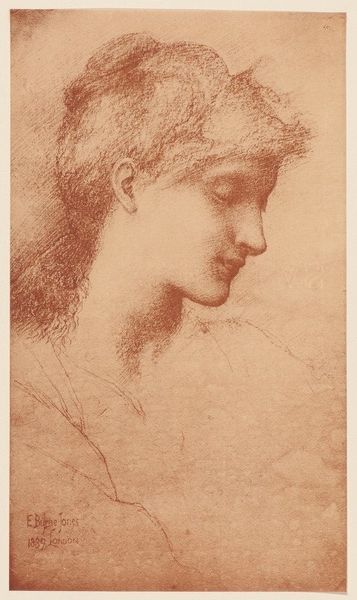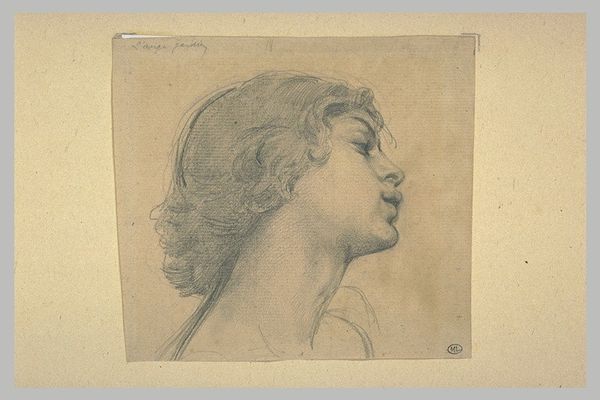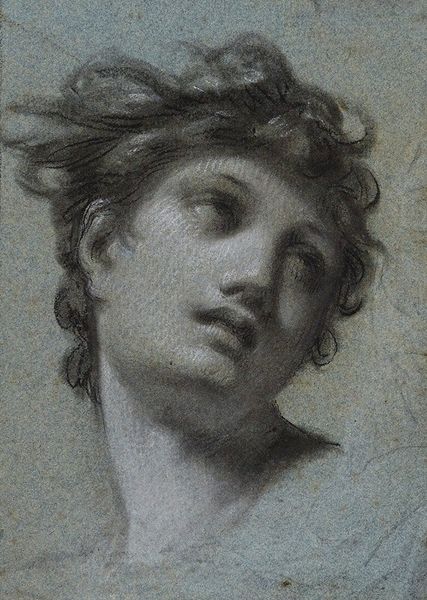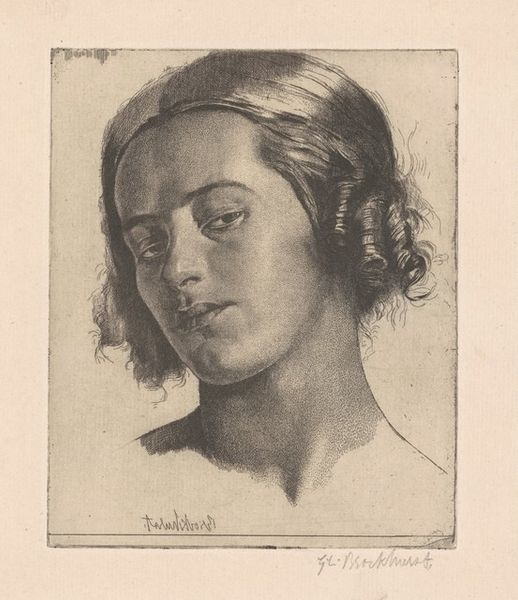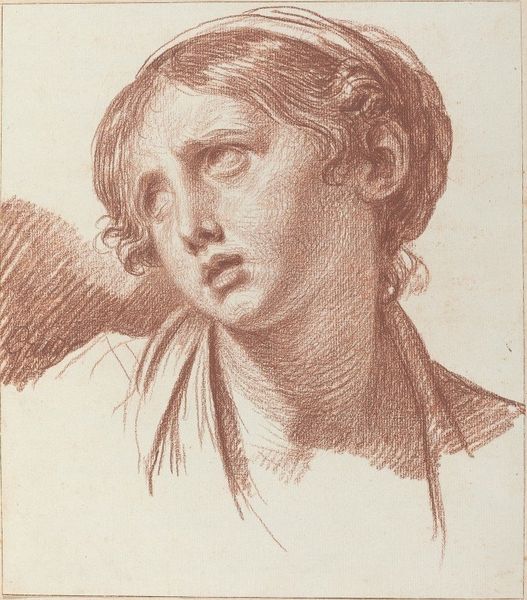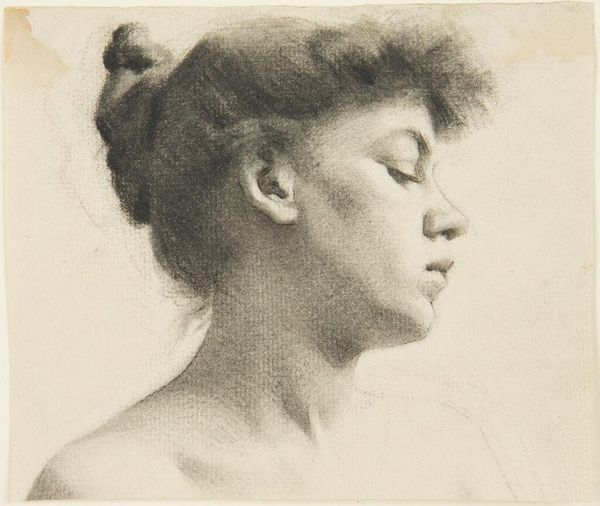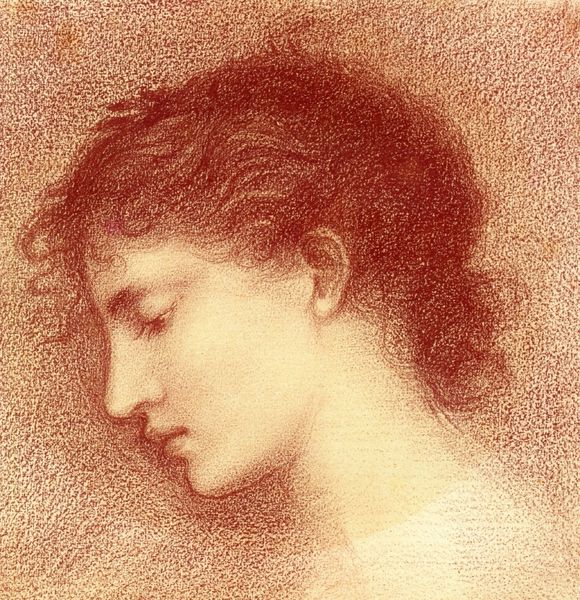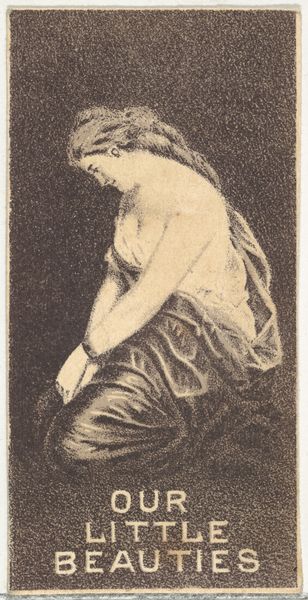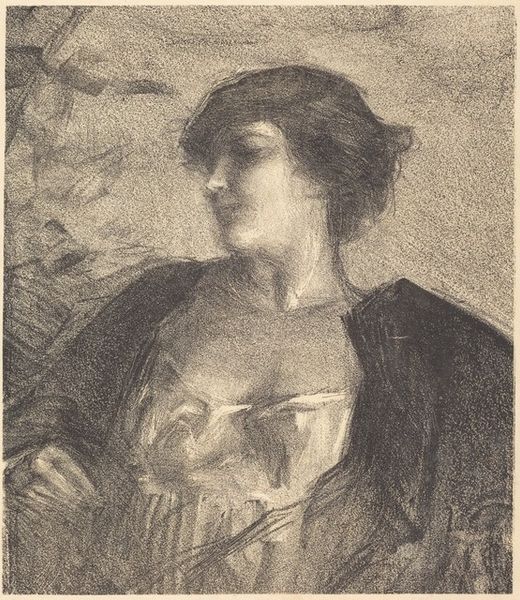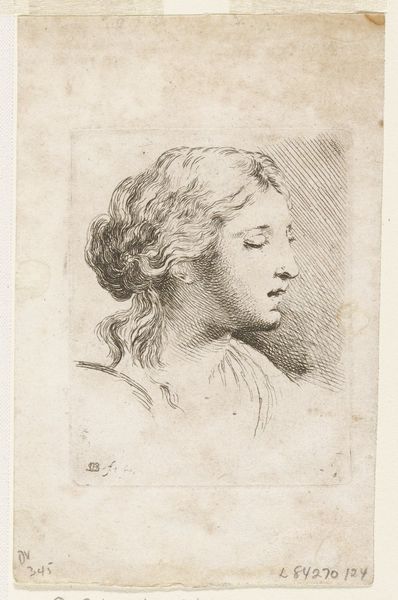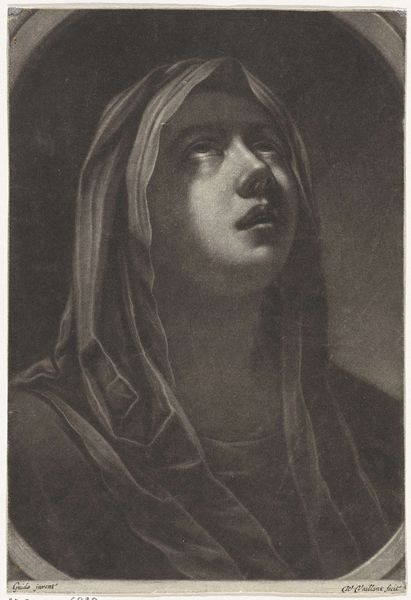
drawing, paper, ink
#
portrait
#
drawing
#
self-portrait
#
baroque
#
portrait image
#
charcoal drawing
#
paper
#
ink
#
portrait drawing
#
realism
Dimensions: height 96 mm, width 109 mm
Copyright: Rijks Museum: Open Domain
Curator: Let's discuss "Head of a Young Woman" by Wallerant Vaillant, dating from around 1658 to 1677, currently held at the Rijksmuseum. Editor: My first impression is one of understated elegance. The limited tonal range focuses attention on the subtle shifts of light and shadow defining the woman's face, giving the drawing a striking and profound depth. Curator: It's worth noting Vaillant was a pioneer in the development of the mezzotint technique, allowing for those rich tonal gradations through the roughening and scraping of the printing plate. It allowed the broad dissemination of artworks, contributing to his success as a portraitist for the wealthy elite and nobility of his day. Editor: You can really see that control of light in the rendering of the hair, for instance, how soft and almost airy it looks against the relatively stark background. It gives the subject a kind of dreamlike presence. Are we sure it is a portrait or is this woman fictional, some archetype? Curator: Actually, some scholars propose that this could even be a self-portrait by Vaillant himself, but its androgynous character invites speculation and subverts the standard genre norms. We cannot forget that images always carried weight and shaped cultural values and norms; questioning the boundary of genders then, using charcoal and ink on paper, must have carried an innovative socio-political dimension! Editor: Fascinating! So this image destabilizes rigid, gendered, social categories through this artistic ambiguity. I am very much seduced by that almost melancholic expression. The slightly averted gaze… it’s almost confrontational but remains soft. Curator: Portraits held significant societal power back then. Commissions from rising bourgeois families gave artists not just patronage but exposure, playing a role in crafting narratives around power and wealth. That gaze, whether male or female, became crucial in defining societal status and, increasingly, questioning the status quo. Editor: Reflecting on the subtleties, the technique, and those ambiguous readings make it clear Vaillant offered more than mere representation. He presented viewers with both a study of character, and a commentary about gender roles in his era. Curator: Agreed, seeing "Head of a Young Woman" reveals much about how societal status was portrayed and perhaps challenged at a time when visual messaging and portraiture had significant cultural and social impact.
Comments
No comments
Be the first to comment and join the conversation on the ultimate creative platform.
